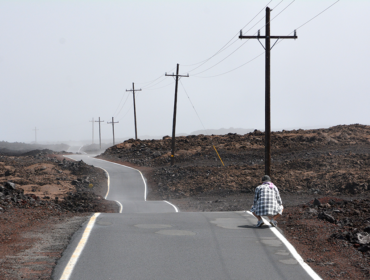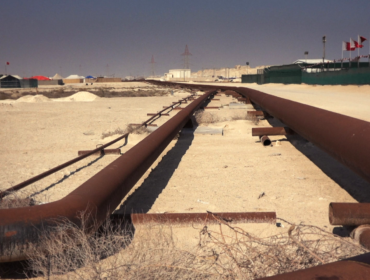While our tapering survey is still online on our pulpresearch blog, we received some of our athletes’ experiences with tapering. These paragraphs definitely show that tapering is a very individual thing, even though there are guidelines everyone is more or less sticking to. Ladies first, we start with Rachel Joyce …
Sorry for the length of this post. But I think that it doesn’t make sense to split the experiences, so please scroll, thanks.
Rachel Joyce, winner of Challenge Roth 2012, 2nd at IRONMAN Melbourne, 2012
The art of tapering…it’s definitely not just a science! Here are a few thoughts from me.
It has taken me a while to learn what kind of taper works for me. I used to do too little in the week or two leading up to a race, and this left me feeling lethargic and flat come race day. Now, I tend to include a few really light days right at the start of my taper (3 weeks out) and so I start my taper feeling rested, and ready to do some specific sessions. During my taper my volume definitely decreases and there is an emphasis on shorter sessions. There is also a focus on race pace work: so the sessions are shorter but very specific to the race I have coming up. I tend to keep up my swimming frequency but the distance covered per session will come down. This is because feel for the water is particularly important. Similarly, I will probably continue doing about the same frequency of rides and runs but some of these sessions will be very short. I.e a brick run may be just 15 minutes long. As Ironman is an endurance run I will complete a 10 mile run a week out from race day and a ride of 3-3.5 hours.
Of course, a taper is not just about the training. It is important to focus on eating a well balanced and nutritious diet: sticking to my daily intake of Biestmilch chews is part of that focus: you need to be healthy as well as fit on race day! I also focus on getting plenty of sleep and maximizing my recovery time. Then all that is left to do is mentally prepare for the race: I visualize myself being in the race and let myself get excited about getting out there on race day.
Edith Niederfriniger, top pro triathlete from Italy for many many years
My tapering lasts 1 week, I reduce the volume, but keep up the pace of the sessions. I don’t adhere strictly to a nutrition plan, but I refer slightly more proteins during the frist 3 days, then 2 days with more carbs and the day before the race I eat a mix of carbs and protein!
Years ago while tapering I tended to suffer from with health issues such as fatigue, head cold etc. Now I increase the Biestmilch intake during the taper time and there’s no issue anymore 🙂
I don’t have mental problems to reduce the volume, because if I do it right, I can feel the energy coming up and this gives me confidence for the race.
Sebastian Kienle, 70.3 IRONMAN world champion 2012
How I am tackling the taper period depends a lot on the distance I am going to race on, whether it’s an Ironman distance or a 70.3.
On shorter distances too long a taper and decrease in training can make you lose the body tension and the mental focus. Before a long distance race I think many of us make the mistake of training too much during the weeks up to the race.
My very own way of tapering changed quite a lot since I began with this sport. The fitter you get the faster the body tends to recover. But this doesn’t mean that my taper periods became shorter, no they became different. Meanwhile I reduce my training after the last 3 days of intense training (day 14-11 before the race) a lot by around 70% for 3 days (day10-7).
After that follows a phase of medium training, a 50% reduction in volume, combined with some sessions in racing intensity(day 6-3). The last 3 to 4 days up to the race I slightly increase my training volume again. This schedule proved to work perfectly for me this year. Before my first long distance race I reduced my training for a longer period of time. The days close to the race I only did very little. I got this feeling as if my body wanted to say good bye, I am on holidays now. But obviously this feeling did no harm to my performance.
[nivo_slider source = ‘group’ width = ‘640’ height = ‘360’ count = ‘6’ align = ‘left’ effect = ‘slideInLeft’ slices = ’15’ pause_time = ‘3000’ pause_on_hover = ‘true’ anim_speed = ‘500’ direction_nav = ‘hover’ control_nav = ‘true’ group = ‘592’]
Ronnie Schildknecht, 6th times winner of IRONMAN Switzerland, 1st man under 8 hours on US soil
The term tapering only applies, if you have been on high volume training sessions over a longer period of time. If you want to peak on time, optimal tapering is a crucial part of your whole preparation schedule for a race. I personally start my taper period 2 weeks before a long distance race. During taper I think it is most essential to give mind and body time to recover.
Open the body’s gate for peak performance
Just to do nothing during this phase the training would definitely be fatal. The body would receive the wrong signals, and start to get lazy and lethargic. I decrease my training volume during taper and witch to shorter and more intensive sessions. My overall aim is to get into a state of performance capacity that makes it possible for me to peak on time. Therefore it is important to recover quickly after the training session despite setting an effective training stimulus.
In other words: During these last 2 weeks I don’t overreach anymore, I try to keep the performance level I achieved during the hard sessions the weeks before. The time of torture is over. To set new stimuli cannot be a goal anymore, it’s more about keeping the memory alert. During taper I don’t want to get faster anymore, I want keep a steady level, and I do whatever I can to foster this condition to be able to retrieve it on race day.
And last but not, in case some kind of bad conscience may arise, I have a nice qote from my good buddy Sebastian for : Better 2% undertrained at the starting line than 1% overtrained … an in this sense of the word: Happy Tapering, guys!
Matt Burton, IRONMAN world champion, age group 18-24, 2011 / 2012
To start with I am not an advocate of the word “taper”. For so many it seems to mean »take the foot off the gas…« But why do such a thing when you are so close to the race in which you have to find your right gear so quickly!
The word taper seems to attract so many mixed emotions and thoughts. For me training and racing are all about achieving a higher level. It is perfection I am searching for. As long as I shall compete I hope to come closer to what I think was/is the perfect race. But as perfection per se is a process not a goal striving for perfection will never be met and never end.
For me it is essential that taper doesn’t become a period based on your most intense training intervals. Just because you are cutting down on volume does not mean to take the newly found fresh feel on to running your 400m sessions in a 65-70 second cycle instead of a 75 second cycle or pushing 400watts on the bike instead of your sustained 350 base.
My very own “taper” time
Of course, many variables can alter the propositions below but for the sake of clearness I will base this on the specific situation before an Ironman and 70.3 event.
Common taper thoughts
2 days out from a race I tend to take a »full day« off! This depends on travel etc. but mostly on feel. I perform best after a full day to absorb then flush it out the day prior to the race with solid swim-bike-run session.Carb load is not something I take full belief in. Once I commence the taper period my training has minimized in a way that food will begin to fill my stores and assist recovery. On race day I will hopefully be fully loaded.Keeping the immune system strong in this period is vital to racing above expectations.
Ironman taper time… To hit peak fitness
A 10 day window is substantial in my course of activity to commence a drop in volumeFull focus and energy is based on a day-to-day feeling. No session is deemed compulsory and the verdict will be drawn each morning upon waking and even to the point of commencing a session
To break the sport into disciplines:
Swim sessions do not change a lot. The sessions are half the distance during race week. Standard session would be 4-5km. So race week would see no more than 1/2 this with main set focus on greater arm speed and turn over.
The Bike components are fairly simple. 10 days prior to the race they include some sessions with short blocks only slightly above race Wattage/effort. This work having been done so some 2-3h aerobic sessions are important to follow. I don’t do any hill climbing or big gear efforts during the taper period. This tears to much into glycogen bonds which do take time to repair.
The run sessions. I do a longer steady 90 minutes run the week out with the last 30 minutes rising to a race effort before shutting it down. Personally, I do a variety of speed play sessions that blend continuous with interval training. These fartlek sessions are drawn on. I then add a track set of 400s (8-10 reps) with complete focus on greater leg turnover.
The week out from a race I put greatest emphasis on the 90 minutes run. If the legs are heavy, I shut down after 60 minutes. But I am out the door no matter how I feel initially. To feel flat during the first part of a “taper” phase is normal. The body is going through a shock period, and experiences some kind of withdrawal symptoms.
I have great belief in the fact that you can always swim, bike or run yourself into a greater feel when in an adaptation phase. So persist with the session for sometime until you are fully aware of the state of your bodies performance for the day.
70.3 taper time
A week range (slightly shorter than for an Ironman)As the intensity in training has been slightly higher than that for an Ironman it is important for me to not engage in a prolonged adaptation period pre-race. The volume of training has not been quite as demanding as the training for an Ironman distance, so the body will be slightly less fatigued when approaching a 70.3 distance race, always having in mind that especially fast twitch fibers are needed working overtime.Again, I decrease volume sessions in the week leading into race. Fartlek sessions make up my core of run sets completed with full emphasis on leg speed.I do short intervals on the bike to bring life to the legs just out from race day.The swim sessions I enjoy during race week with some short sprint work mixed with drills to keep the form honest.I stick to 1-2 brick sessions only over this period.And I give the body a chance to recover after each single discipline sessions as if to draw on the rawness of each disciplines’ physical requirements.I tend to focus on form and do things pretty for a week. I save the ugly work for race day.
I try not to be to drawn into the idea of specific taper but instead treat this phase as a time for optimal adaptation, so I consider it rather as a specified training block than a taper period. I know I still have much to learn and information to acquire based on what works best for me. But I am still young and time is on my side.
One thing I am definitely aware of is that each athlete does it her or his own way!
It’s all about finding the Happy Medium and reserving the Biest within!
Loïc Hélin, Belgium coach of:
Stefanie Adam, best bike split in Kona 2012, Sam Gydé, Ironman world champion, age group 35-39, 2011/ 2012
Frederic Sleutel, 12th age group 35-39 at Ironman World Championship 2012, Stin Veldeman, 85th age group 30-34 at Ironman World Championship 2012
I try to keep the tapering strategy as simple as possible, especially when it comes to food.
I like very short taper periods. Lots of coaches and athletes work with 2 or 3 week taper periods but the chance to mess up your fitness in that long a period of time is very big!
With my guys I make pretty short specific build up of only 5 or 6 weeks. This is only possible because our training level during the ‘general build-up’ is high and consistent. My motto is: better to train every week 12h instead of shifting continuously between 8 and 18h/week. In these 12h/week I put pretty much quality in.
A short build-up only needs a short taper to get the necessary rest. In that way you don’t have to change lots on your nutrition plan because during 5 days of resting you won’t get fat ;-). If you taper for 2 weeks, a common reaction is to panic: you feel getting fat and slow because you rest too much and 3 days before the race you go out for a 4h30 bike ride and lose all what you have built up.
Our cook made a quatre-quarts cake with apples or mango (no joke) EVERY DAY, he cooked pretty normal food (only potatoes we didn’t eat because they are completely different in Kona) with the spices we are used to in Belgium. Then of course we had meat and fish. Pancakes based on bananas (straight from our garden in Kona!) were also integral part of our diet. After the last big training day, the Saturday before the race we went to Burger King: after 3 very big training days, the athletes needed some fat ;-)…



